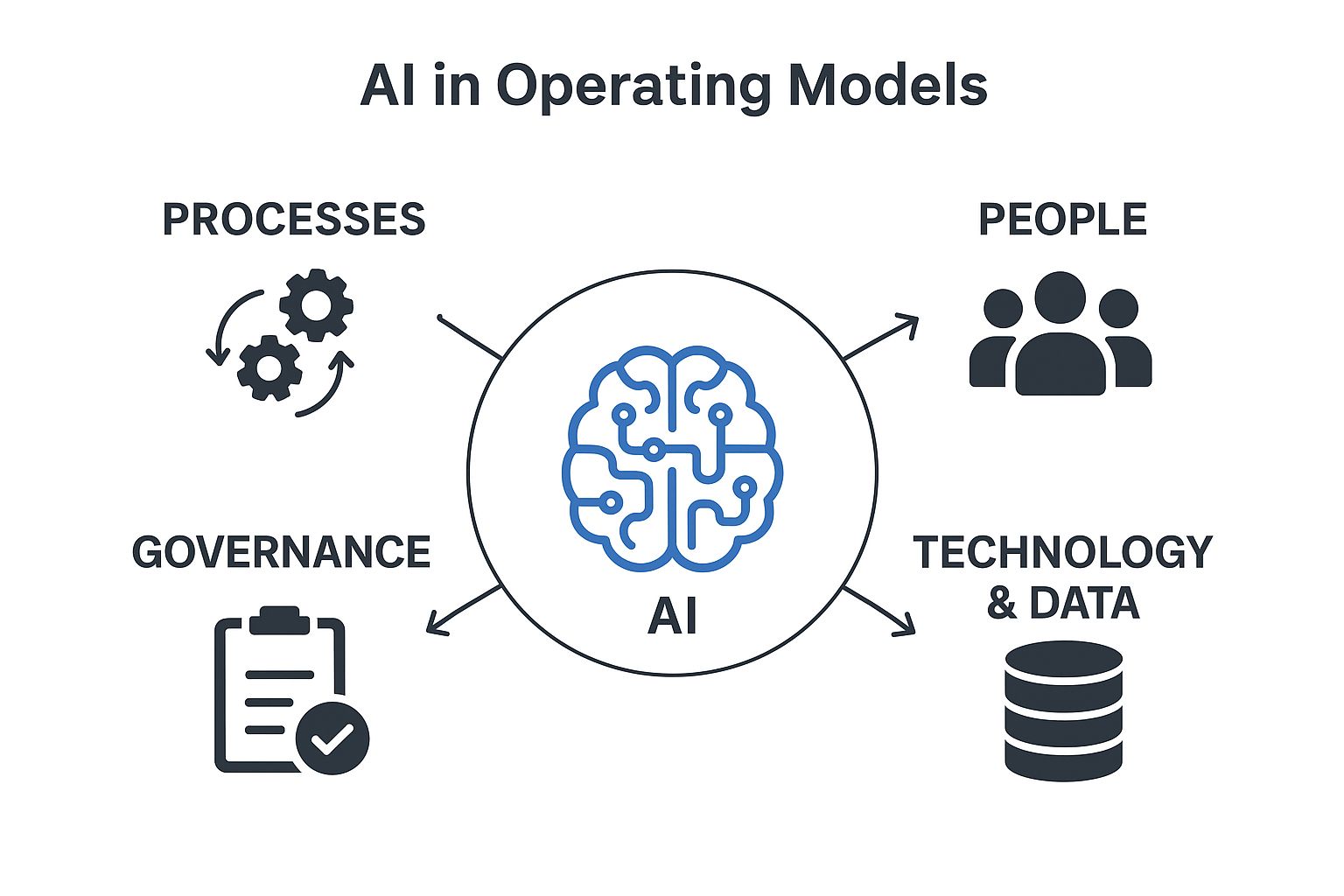
“IA in operating models” usually refers to how Artificial Intelligence (AI) is embedded into the operating model of a company — meaning the way an organization delivers value (its processes, roles, governance, technology, and culture).
Here’s a breakdown to make it practical and actionable:
🔧 What an Operating Model Is
An operating model describes how a company runs day-to-day to deliver its strategy. It typically includes: • Organization & Roles – Who does what • Processes & Workflows – How work is done • Technology & Data – What systems and data are used • Governance & Decision-Making – How priorities are set and monitored • KPIs & Performance Management – How success is measured
🤖 How AI Can Be Embedded into Operating Models
-
AI-Enhanced Processes • Automation: Using AI for repetitive tasks (e.g., invoice processing, scheduling, routing). • Decision Support: Predictive analytics to optimize planning, demand forecasting, pricing. • Intelligent Workflows: AI-powered orchestration that routes work dynamically to the right teams.
-
AI-Driven Roles • New Roles: AI product owners, data scientists, ML engineers, prompt engineers. • Augmented Roles: Managers using AI dashboards for real-time decision-making, HR using AI to screen candidates.
-
Data-Centric Architecture • Single Source of Truth: Unified, clean, labeled data for training AI models. • ML Ops / AI Ops: Continuous model deployment and monitoring integrated into IT processes.
-
Governance & Ethics • AI Governance: Policies for fairness, transparency, compliance (e.g., EU AI Act). • Risk Management: Model drift detection, bias monitoring, explainability frameworks.
-
Culture & Upskilling • AI Literacy Programs: Training employees to use AI responsibly and effectively. • Change Management: Building trust and adoption among teams.
🏗 Framework for Implementing AI in Operating Models
- Assess Current Operating Model – Map key processes and pain points.
- Identify AI Opportunities – Automate, augment, or redesign workflows.
- Build the AI Capability – Data, infrastructure, people, and governance.
- Pilot & Iterate – Start small (1-2 use cases), measure impact, refine.
- Scale Across the Organization – Standardize and embed AI in BAU (business as usual).
If you’re interested in this topic, feel free to get in touch or share your thoughts in the comments.



Comentarios (0)
Aún no hay comentarios. ¡Sé el primero!